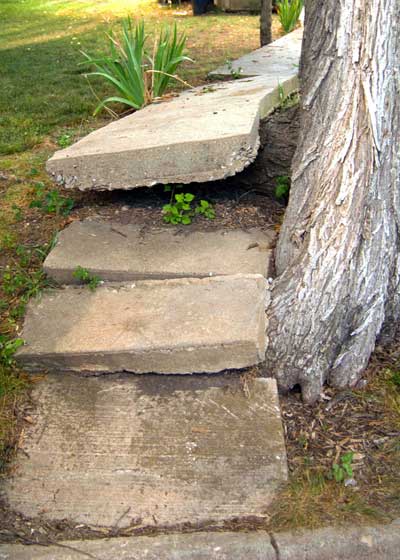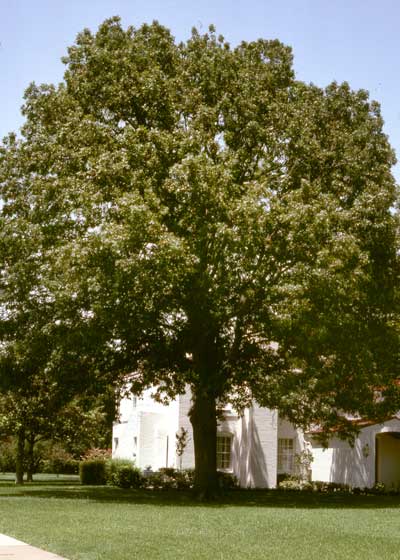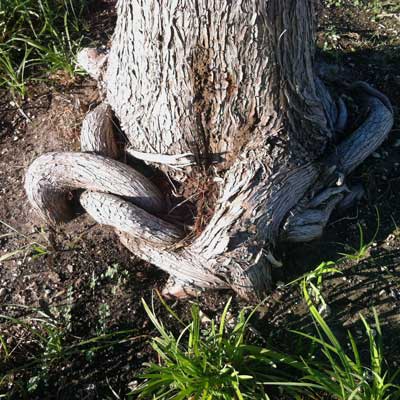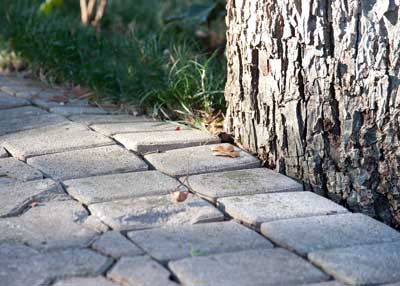Root of the Matter
Maybe it’s because they’re usually out-of-sight, but tree roots certainly seem to cause a lot of angst for Texas gardeners. Let’s shine a little light onto the subject.
Here is a scattering of facts you’ll want to consider before you do anything that might harm your trees’ critical roots.

• Tap roots? Did you know that 90 percent of any tree’s roots are in the top foot of soil. The next time you see a tree that has (sadly) been bulldozed over, look at the mass of roots and the directions they’re going. Almost as soon as you get below grade, trees’ roots start heading out parallel to the soil’s surface.
Oh, sure – there will be one or more anchoring “tap” roots, but the ones that are most active in taking up water and nutrients are going to be those roots that are just beneath the soil line. They’re there to compete with grass, shrubs and groundcovers for rainfall and irrigation.

• It’s estimated that one mature oak tree will use 50 to 100 gallons of water – per day! And since the roots are so near the soil surface, that’s why drip irrigation is by far the better way to irrigate your trees during the dry times than the root-watering rods. Inserted 12 or 16 inches into the soil, those rods will bypass most of those high-functioning roots.
• You call the area beneath a tree’s canopy its “drip line.” If you think of a tree as an umbrella, it’s where the water would fall in a rainstorm. As the tree grows larger, its feeder roots grow and develop out away from the trunk in the general vicinity of the drip line. When you drip-irrigate or feed a tree, that’s where you want to concentrate your activities.

• Reemphasizing the point that 90 percent of any tree’s roots are in the top foot of soil, that’s why you never want to add soil over the entire root system. You can do more harm to a tree, including killing it over a period of 12 to 24 months, by adding 2 inches of soil to its root area than you’ll do by removing equal or even greater amounts of soil.
If the grade absolutely must be raised, hire a certified arborist to consult with you, perhaps even to supervise the work. You may be able to put a well around the trunk, so that a large percentage of the roots are at the original grade. However, that well will probably be a lot larger in diameter than you’re thinking right now, and that’s where the arborist’s training will be essential.
• If you’re installing sprinkler lines or other utilities near a tree, avoid cutting any more roots than you must. It may involve buying more pipe or cable, but it’s a small price to pay to save a valuable tree. If you are installing new sprinkler heads beneath trees, come in from the sides, rather than cutting across the entire root system. Think of the root system as a wooden wagon wheel. Come in between spokes, instead of cutting across them.
• Roots on one particular side of a tree provide water and nourishment to the same side of the top of the tree (assuming there are no twists in the trunk). So, if you’re doing major excavating, perhaps for a pool, near a tree, you should consult with the certified arborist beforehand. You may need to have the top thinned to compensate, and you’ll certainly want to do that kind of work in the fall if at all possible, once the stress of hot weather and dry soils has passed. That’s why this would be a great time.

• Roots can sometimes be their own worst enemies. When they overlap one another or encircle the trunk, they can girdle necessary tissues and cut off flow of nutrients and water, even to the point of killing the tree slowly and painfully. Do a little careful hand-digging and expose enough of the root flare to be sure that isn’t happening to your trees. Your certified arborist could also use an air spade to move the soil out of the way much more easily.

• Roots can threaten walks, drives, patios and even foundations. Some structural engineers would be happier if we had no landscaping and associated roots at all, but most of us don’t like that alternative.
A certified arborist would know if it would be possible to trench and install a root barrier material to keep roots from extending beneath sensitive surfaces (not possible in the case of our driveway in photo above). It’s better to do that preemptively than as a reaction to an existing problem. Again, fall is the best time to do this trenching. That gives the tree the longest possible time to regrow strong roots for the summer.

• Those who had ornamental pears that suffered freeze damage last February are likely seeing root sprouts come up around them. This is also fairly common with live oaks. Some 10-15 percent of them have this genetic bad habit. Unfortunately, there is no way to spray to stop these. They are tethered to the mother tree. You must either remove them manually or have the tree removed entirely.
• If you have a tree that you’d like to relocate this winter, you should root-prune it in early September. That involves using a sharpshooter spade to sever its lateral roots at a spot where you’ll be digging. Once they’re cut, the remaining roots will begin producing new roots within what will become the soil ball. It will hold the ball together more strongly, and it will also condition the plant to the move.
